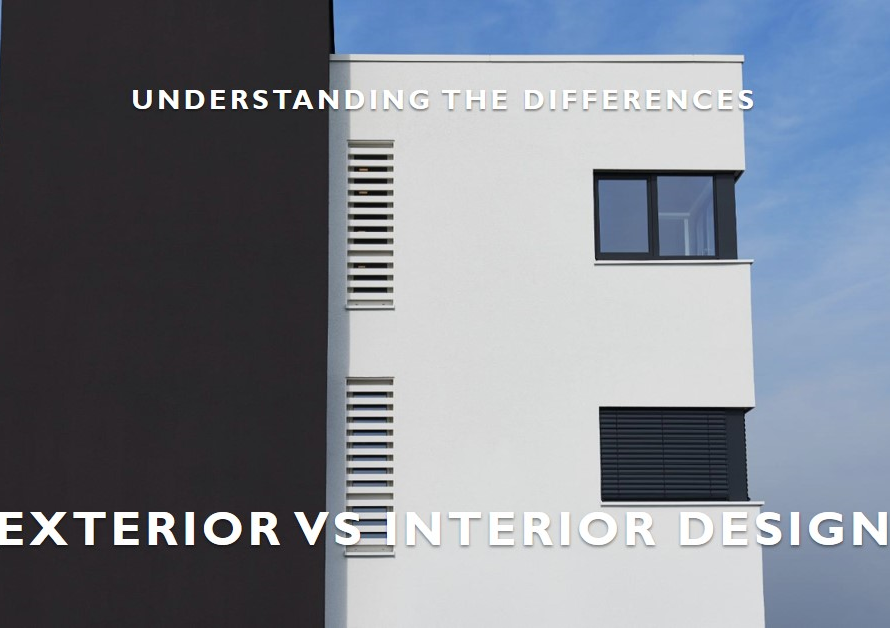
Table of Contents
Defining high-tech architecture
Defining high-tech architecture can be quite a task as it encompasses a wide range of elements and concepts. At its core, high-tech architecture is characterized by the use of advanced technology, industrial materials, and innovative construction techniques. It emerged in the 1970s as a response to the rapid advancements in technology and the desire for buildings that reflected this newfound progress.
High-tech architecture also places great emphasis on functionalism – ensuring that every element within a building has a specific purpose and contributes to its overall function. This approach can be seen in iconic high-tech structures such as the Pompidou Centre in Paris or the Lloyd’s Building in London. These buildings showcase exposed mechanical systems, transparent facades, and an overall aesthetic that celebrates functionality.
While some may argue that high-tech architecture is purely utilitarian, others argue that it goes beyond mere functionality to become an architectural style that reflects our relationship with technology. High-tech architecture often incorporates elements of futurism, reflecting society’s tendency towards innovation and progress. In this sense, high-tech design becomes more than just an architectural style – it becomes a statement about our values and aspirations as a society.
Overall, defining high-tech architecture requires considering both its technological aspects as well as its impact on how we understand and interact with our built environment. It encourages us to think critically about how we incorporate technology into our surroundings while pushing boundaries in terms of design possibilities.
Historical background: Origins and influences
High-tech architecture is a style that emerged in the mid-20th century as a response to the rapid technological advancements of that time. It was heavily influenced by industrialization, science fiction, and the growing awareness of the impact of technology on society. The roots of high-tech architecture can be traced back to the works of architects such as Le Corbusier and Ludwig Mies van der Rohe, who pioneered modernist architecture and emphasized the use of new materials and construction techniques.
One important influence on high-tech architecture was the movement known as Structural Expressionism, which sought to express the inherent qualities of materials through their design. Architects like Felix Candela and Heinz Isler experimented with thin-shell concrete structures that showcased both structural efficiency and aesthetic appeal. This emphasis on innovation and expressing technology in architectural form laid the groundwork for high-tech architects to push boundaries further.
Another major influence on high-tech architecture was post-war reconstruction efforts, particularly in Europe. The devastation caused by World War II forced architects to rethink traditional approaches to building design and instead focus on efficiency, speed, and adaptability. This led to an increased interest in prefabrication techniques, modular designs, and flexible spaces – all key aspects of high-tech architecture. Additionally, emerging technologies such as computers played a crucial role in reshaping architectural practice during this period.
Characteristics of high-tech architecture
One of the most distinguishing features of high-tech architecture is its emphasis on technological expression. This style celebrates the use of raw materials and industrial elements, showcasing them in a way that highlights their functional purpose. High-tech buildings often feature exposed structural elements, such as steel beams and glass facades, creating a visually striking aesthetic.
Another characteristic of high-tech architecture is its integration of advanced technology into design solutions. From energy-efficient systems to smart building management systems, these buildings incorporate cutting-edge technologies to enhance functionality and sustainability. For example, solar panels may be integrated into the façade or roof of a high-tech building to harness renewable energy, while automated lighting systems can optimize energy consumption.
This combination of technological expression with innovative design solutions sets high-tech architecture apart from other styles. It creates a dynamic and futuristic feel that challenges traditional notions of what buildings should look like while pioneering new ways to address environmental concerns through integrated technology. High-tech architecture continues to evolve as advancements in materials and technologies emerge, pushing boundaries even further and driving us toward more sustainable and efficient construction practices.
Examples of iconic high-tech buildings
High-tech architecture has given rise to a number of iconic buildings that showcase the seamless integration of technology with architectural design. One notable example is the Guggenheim Museum Bilbao in Spain, designed by Frank Gehry. This architectural marvel is characterized by its curvilinear forms and shimmering titanium panels that change color depending on the natural light. The use of advanced computer modeling software allowed Gehry to translate his visionary designs into reality, resulting in a building that has become an iconic landmark.
Another pioneering high-tech structure is the CCTV Headquarters in Beijing, China. Designed by Rem Koolhaas and Ole Scheeren of OMA, this building defies conventional geometry with its unique form resembling a continuous loop. Its distinctive structural system utilizes advanced engineering techniques and innovative materials such as steel and glass to create an open, flexible space for broadcasting offices and studios. The CCTV Headquarters stands as a testament to the possibilities of high-tech design and represents how technology can shape our urban landscape.
These examples highlight how high-tech architecture pushes the boundaries of traditional design approaches through innovative use of technology. The integration of cutting-edge materials, computer modeling software, and engineering techniques enable architects to create structures that are not only visually stunning but also functional in their purpose. These iconic buildings stand as symbols of human ingenuity and serve as inspiration for future architectural innovations in an ever-evolving technological landscape
Impact on urban landscapes and sustainability
High-tech architecture has the potential to significantly impact urban landscapes and promote sustainability. By incorporating technological advancements into building design, high-tech architecture aims to create structures that are more energy-efficient, environmentally friendly, and visually striking. One of the key features of this architectural style is its emphasis on innovative materials and construction techniques that reduce energy consumption and greenhouse gas emissions.
Furthermore, high-tech architecture can redefine the relationship between buildings and their surroundings in urban areas. With the integration of smart technologies such as sensors and responsive systems, these structures can adapt to their environment by adjusting light levels, temperature control, and even air quality. This not only enhances the comfort for occupants but also reduces energy wastage by optimizing resource utilization based on real-time inputs.
Additionally, the introduction of high-tech architecture into urban landscapes has the potential to inspire a culture of environmental sustainability. These visually captivating structures serve as symbols of progress towards a greener future while setting an example for other developments in cities worldwide. By seamlessly blending technology with aesthetics, high-tech architecture encourages people to reevaluate their lifestyles and embrace sustainable practices in order to harmoniously coexist with their built environment.
Future prospects for high-tech architecture
The future of high-tech architecture holds immense promise as advancements in technology continue to revolutionize the field. One exciting development is the integration of smart materials into building design. These materials have the potential to be responsive and adaptive, transforming the way buildings function and interact with their surroundings. Imagine a facade that adjusts its opacity based on sunlight or a roof that can capture rainwater and redirect it for later use. With these innovative materials, high-tech architecture can contribute to sustainable practices by reducing energy consumption and optimizing resource utilization.
Another area with great potential is virtual reality (VR) in architectural design. VR allows architects and designers to create immersive digital environments where they can visualize their concepts at an unprecedented level of detail before construction even begins. This technology offers unprecedented opportunities for collaboration, enabling stakeholders from different disciplines to experience proposed designs in real-time and provide valuable feedback. By simulating elements such as lighting, acoustics, and spatial relationships, VR has the power to elevate architectural design by ensuring that every aspect is fine-tuned before breaking ground.
As technological advancements continue at an exponential pace, we can expect high-tech architecture to push boundaries like never before. From smart cities with interconnected buildings that optimize energy consumption across entire urban areas to robots assisting in construction tasks, these developments highlight endless possibilities for the future of architecture. High-tech architecture will not only enhance our built environment but also propel us toward a more sustainable and efficient future – one where buildings seamlessly integrate with cutting-edge technologies while preserving our planet’s resources for generations to
Conclusion: The enduring legacy of high-tech architecture
As we come to the conclusion of our exploration into high-tech architecture, it becomes clear that its legacy is far from over. The principles and ideas behind this architectural movement continue to influence contemporary design and construction practices. One enduring aspect of high-tech architecture is its emphasis on technological integration, which remains a central focus in today’s buildings.
High-tech architecture demonstrated the potential for technology to not only enhance functionality but also become an integral part of the aesthetic appeal of a structure. This legacy can be seen in the use of smart building systems, where technology is seamlessly integrated into every aspect of a building’s operations. From automated lighting and heating systems to advanced security measures, these innovations showcase how high-tech principles have shaped modern architectural practices.
Furthermore, sustainability has become an increasingly important consideration in architectural design, and high-tech principles have made significant contributions in this area as well. By prioritizing modular construction techniques and incorporating energy-efficient technologies, high-tech architecture has paved the way for more sustainable buildings that minimize their impact on the environment. As concerns about climate change grow ever more urgent, it is likely that these sustainable practices influenced by high-tech architecture will remain crucial in shaping future designs.
In conclusion, while high-tech architecture may have emerged several decades ago, its influence continues to be felt today. From incorporating technology into building design to embracing sustainability as a core principle, this architectural movement has left an enduring legacy that continues to shape contemporary construction practices. As we look to the future, it will be interesting to see how these principles


